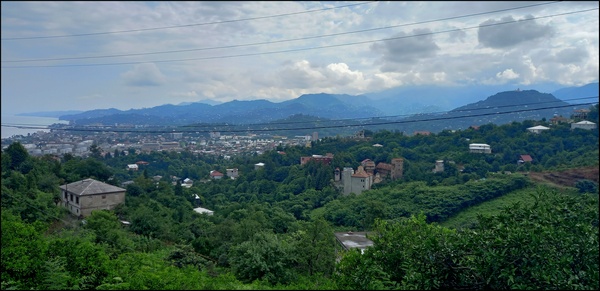
10 Things I Love about the Country Georgia
I have to confess that up until I arrived in Georgia’s capital city, Tbilisi (four weeks after my arrival in Georgia), I was more or less 50/50 on Georgia. Unfortunately, there were quite a few things I disliked about the country’s culture and lifestyle
And arriving during Georgia’s broiling-hot July & August summer holiday season certainly added to my discontent. My arrival time meant that it was ridiculously hot (making it hard to enjoy anything) as well as ridiculously noisy, crowded and full of screaming/yelling children. That was especially true at Georgia’s humid, sub-tropical Black Sea coastal beach towns. That was not my scene at all.
So, secondly I confess that I definitely visited Georgia at the wrong time of year, quite unfortunately for me. But those hassles & aggravations aside, there were still other, unrelated things I found I greatly disliked. As a result, it’s hard to say if I would like Georgia better in another time of year or not.
Interestingly, when I arrived in wonderful Tbilisi city, which I instantly loved, I suddenly liked Georgia a whole lot more than I had during the entire previous month.
Maybe if I had started my explorations of Georgia in Tbilisi, then my first impressions and overall feeling for the country would have been different. Who knows, maybe it was just the culture at Georgia’s Black Sea coast that rubbed me the wrong way?
In any event, even counting all my Black Sea coast experiences, quite happily, there’s the other 50% of the 50/50 equation – the many things that I do really like about Georgia. In fact, when compiling this list of 10 things I love, I actually quickly came up with nearly 20 things I like about the country. So there you go.
I pared my list down to the 10 most important, impactful things that I like about Georgia. And without further ado, here they are:
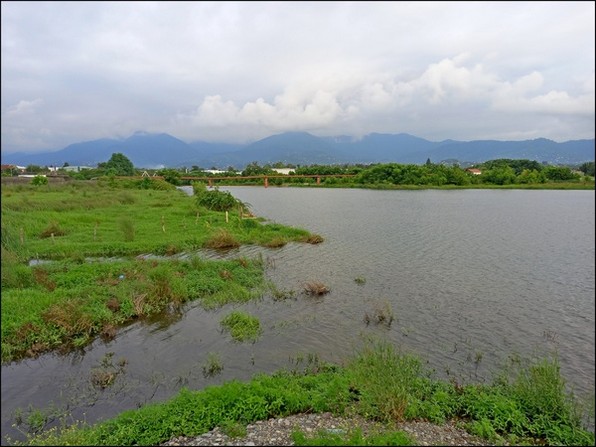
1. Lots of diverse nature
From what I’ve seen both firsthand and in photos, Georgia is overwhelmingly natural. It’s also incredibly diverse.
In the west, there’s the long Black Sea coast lined by super-long stone beaches, backed by densely forested low mountains, and sticky-humid with a wet sub-tropical climate. The northern and eastern regions are capped by a series of incredibly high & jagged mountains, many over 4500 M / 14,800+ ft (higher than all the European Alps, I might add).
In central Georgia there’s a high rather dry plateau lined by arid rolling hills. Then there’s the country’s famous grape-growing / wine-making valleys.
An estimated 26,000 rivers flow through the country. Other water features include lakes, waterfalls, low wetlands and, of course, the Black Sea.
During my five weeks in Georgia I was only able to visit the Black Sea coast, some lushly-forested mountains close to the sea, and take a train ride across the country to the capital city, during which I gazed at broad cultivated valleys, a highlands plateau, all sorts of mountains, hills and cliffs.
Sadly, during this trip, I did’t get to admire the soaring high Caucus mountain ranges. However, from what I have seen of Georgia, the country appears to consist almost entirely of forests, mountains, agricultural regions and rural areas. It seems to be overwhelmingly under-developed. And it’s all very pretty.
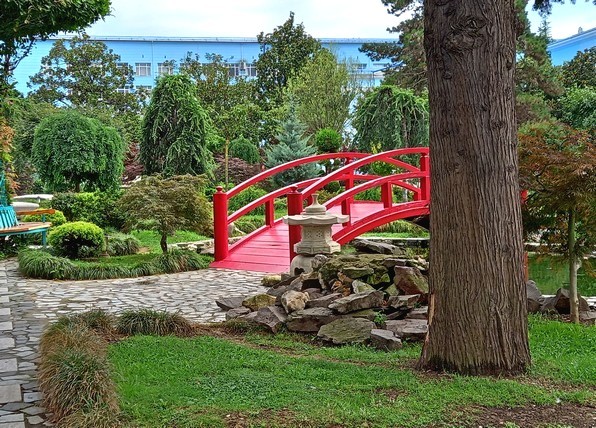
2. Beautiful city parks
As if all Georgia’s natural beauty wasn’t enough, Georgians over the centuries have created many stunning city parks. They’re full of huge shady trees, landscaping, lakes, fountains, forests, walking paths and specialty gardens.
Cities and towns along the Black Sea coast have wide shady coastal parks that back the long beaches for miles and miles. The parks mean that the beaches are backed mostly by nature and are free of traffic noise & city buildings. The coastal parks also provide an even more beautiful area for pedestrians & cyclists to enjoy the beach & coastal views.
Inland cities, like Tbilisi, have dozens of beautiful parks scattered throughout town, adding plenty of green space and peaceful relaxing places. Historic parks, some 100-200 years old and created by renowned gardeners of their times, have huge stunning trees that provide shade, along with well-established landscaping & gardens.
Newer city parks have open lawns, interesting walkways & sitting areas, exercise stations and often modern architecture and artworks.
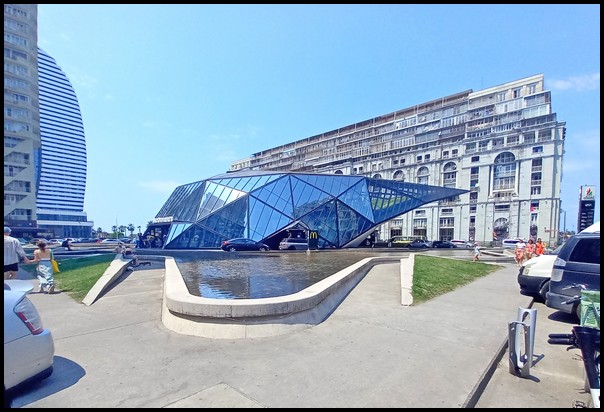
3. Fantastic modern architecture
I’ve only visited two Georgian cities, namely, Batumi on the Black Sea and Tbilisi, the capital. Both cities have really incredible and unique contemprary architecture.
In fact, Batumi is famous in part for its eccentric modern buildings, many of which are soaring towers. The city has so many unique, iconic & famous buildings that it would take several days to see them all.
Some of the most famous include the glass spaceship-like McDonald’s, ChaCha Tower, Alphabet Tower, Hilton’s twin triangular towers, and my favorite, Batumi Tower, with an actual miniature gold ferris wheel embedded in the side of the building way up on the 20th story.
Besides the well-known towers in Batumi, there are dozens more bizarre, whacky, unusual modern creations to stumble upon while exploring the city. In fact, I’d rate Batumi as a modern architecture-lover’s paradise.
Tbilisi also has several amazing & unique modern buildings and other structures. Most famous are the mushroom-like Public Service Building, the glass tubular Peace Bridge and the twin mirrored tubes inside Rike Park (still as yet unused).
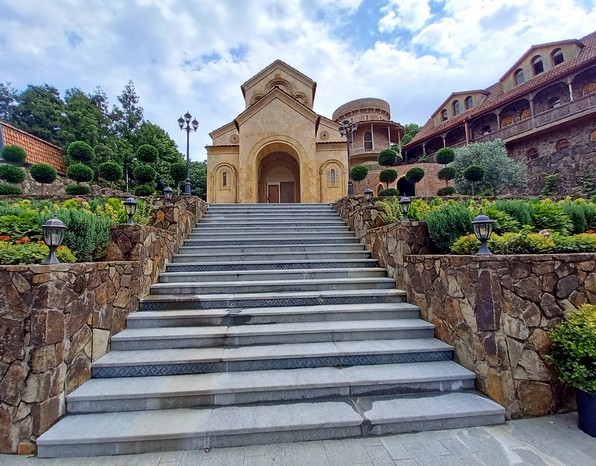
4. Diverse historic architecture
While Georgia showcases a great array of stunning modern architecture, the country actually has even more historic architecture. The buildings were created in many different centuries by many different civilizations and in many diverse architectural styles.
Important historic Georgian architecture includes a lot of churches and monasteries. Many date all the way back to Roman Byzantine Empire in the 300s AD, when the region adapted Christianity.
Many others date back to medieval times in the 1100s-1300s when the great Kingdom of Georgia ruled the region. But a huge diversity of churches & monasteries were also constructed in later centuries, in many different eras and archtectural styles.
But it’s not all just religious buildings. There are amazing historic houses, mansions & palaces; government, civic buildings and private business buildings; historic museums, theater & opera houses; train stations and many other buildings.
They include many historic European architectural styles as well as Soviet-era buildings.
So Georgia is as much a treat for history buffs and lovers of historic archtecture as it is for admirers of modern design.
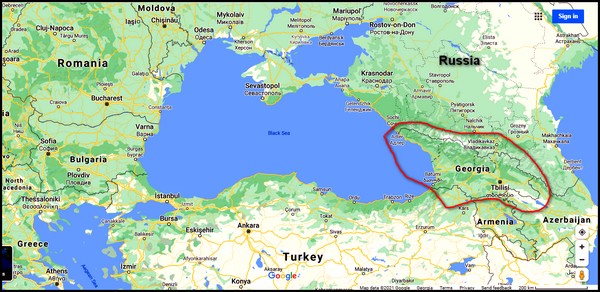
5. The fact that Georgians have kept their culture intact
Amazingly, over the centuries Georgians managed to cling tenaciously to their traditional culture through 300 years of Ottoman Turk rule and then through 90 years of rather brutal Russian / Soviet rule.
I find that quite astonishing and admirable.
I’ve visited several other countries in the region that were previously dominated by the great Ottoman Turk Empire for upwards of 300 to 500 years. Most of them, like Albania, Bosnia, Serbia and even Egypt (!), absorbed much of Turkish culture into their own.
Many adapted Islam, which means not only that they practice Islamic religious tenants, but also that their lands are full of mosques and five-daily calls to prayer over loudspeakers from mosque miniarets. It means many, if not most or all, women wear Muslim-style clothing. Many countries also adopted the Arabic or Turkish language.
Many of the formerly Ottoman-dominated countries also adapted Turkish cuisine, architectural styles, interior designs and many other Turkish habits. Today you can see various traces of the Ottoman era throughout those countries.
But not in Georgia. In Georgia you’ll rarely seen a mosque. Daily calls to prayer are not heard ringing out over the towns or cities. Nobody wears Islamic-style dress.
Georgian have their own distinct cuisine. There are almost no Ottoman-style buildings in the country. And certainly nobody speaks Turkish or Arabic in Georgia.
In more recent history, under Bolshevik and then Soviet Russian domination, Georgians managed to keep their Christian faith, Georgian language (though many older Georgians also speak Russian), cuisine and lifestyle.

6. Georgian food
As I noted above, Georgians have their own unique cuisine. Many native dishes consist of some sort of cheese breads. The variations are surprising.
But there are also ‘hot pots’ that consist of meat chunks, potatoes and vegetables all piled into a clay pot and baked, then served in the pot. And then there are the tasty Georgian ‘dumplings’, quite similar to Polish pirogues, as well as various soups and other distinctive meals.
I didnt’ get a chance to try all of them, but those I did eat were pretty tasty. They’re rather heavy on salt for my palate, and all quite heavy, but with great flavor. I liked the dumplings so much that I ate them 2-3 times a week during my entire 5-week visit.
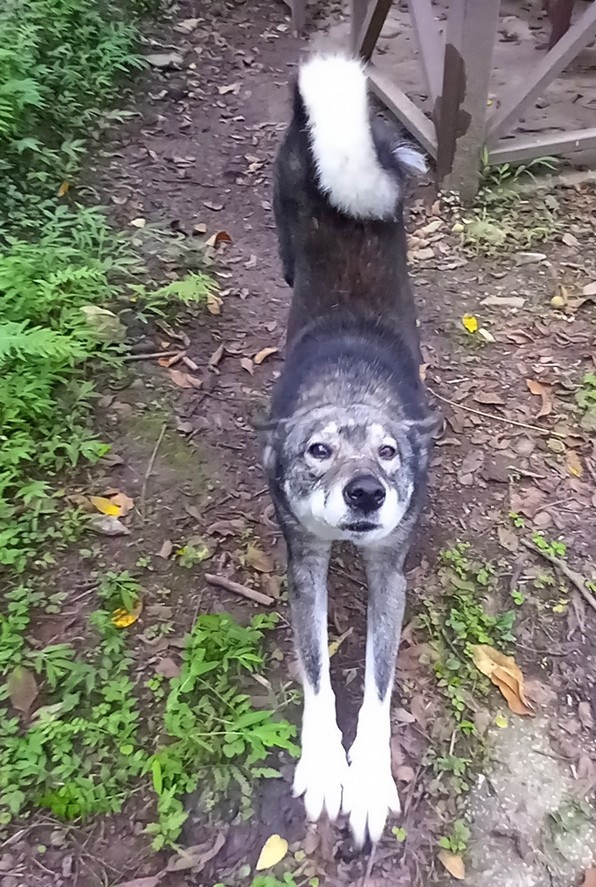
7. Friendly street dogs
Unlike Turkey, Georgia doesn’t have many stray cats roaming around. But they do have a lot of stray dogs wandering around the beaches, parks and city streets.
Most of the dogs are friendly, very calm and love getting pet and fed. Most of them are also neutered, which you can quickly tell from their ear tags.
Georgia’s street dogs seem well taken care of. Most are very healthy, well-fed, and unafraid of humans (which means they’re not ill-treated by people).
Although I am overwhelmingly a cat person, when it comes down to it, I love dogs, too, and just about every other animal. During my travels in Georgia, I definitely enjoyed the company of stray dogs, which seemed like such a novelty after hanging out with cats in Turkey for a total of 12 months in 2020-2021.
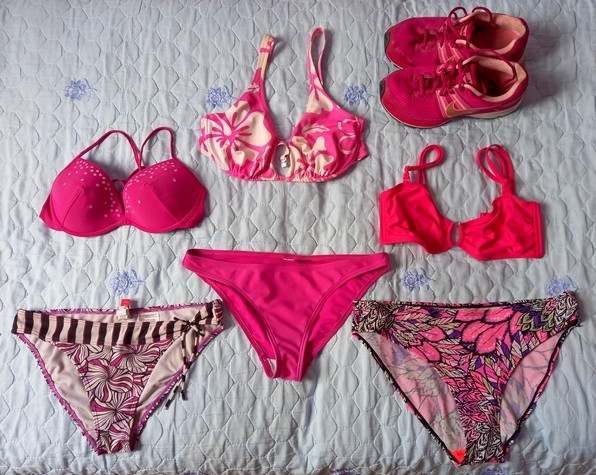
8. Bargain clothing stores
One of the first things I noticed while walking around my first town in Georgia, Batumi, was the huge number of bargain clothing stores. They seemed to have a mix of used and new clothes. I figured they probably sold things are really low prices, considering how inexpensive Georgia is for other things. I continued noticing these bargain shops in other towns and cities I visited as well.
So, since my bikini was falling apart, I decided to go bikini shopping. I was hoping for low prices, but Wow, even I was shocked at how incredibly cheap they were.
One bikini cost only 10 lari / $3.22 US! And they were new, completely unused bikinis. I suspect they are bikinis that didn’t sell for a long time and thus became discounted or sold ultra-cheap to the bargain shops. For whatever reason, though, bikinis are super cheap in Georgia.
I was so happy at my new bikini that I went back and bought a total of three new bikinis!
And then I went shoes shopping since my shoes were also falling apart. I found a pair of beautiful bright pink Nikes for just 30 lari / $9.66 US. And they are also unused (though perhaps older, never sold Nikes) shoes. They’re great, right along with my new bikinis!
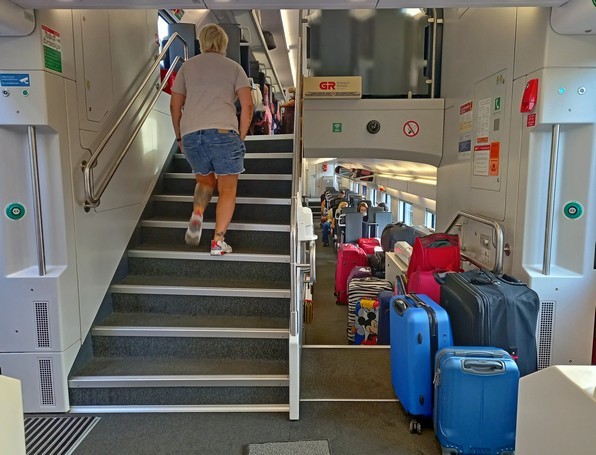
9. Georgia’s modern passenger trains
The overland trip from Georgia’s Black Sea coast to the capital city takes about 5-7 hours and crosses nearly half the country. When I found out I could take a train instead of a bus, I jumped at the chance. I much prefer train travel to buses.
When I went to the train station to catch my train one early morning in mid-August, I wasn’t sure what to expect of Georgia’s train conditions. I suppose my mind automatically defaulted to my most recent train experiences. They had been in Egypt, Bulgaria, Romania and Hungary.
All those trains had been heavy, clunky somewhat vintage deisel trains. Seats had been comfortable enough, though all the seats and interiors were in slightly deteriorating condition and everything was a bit dingy and grimy.
Standing at the station in Kobuleti, Georgia then, I was taken by surprise when an ultra-sleek, streamlined modern electric train came rolling up to the platform. Even more unexpectedly, it was a double-decker train, much like London’s bright red double-decker buses.
Wow, a modern train! In the little ole, little-known country of Georgia. Who knew?!
After the train’s wide side doors slid open and I stepped inside, I was further surprised to find a rather luxurious, fully carpetted, immaculate interior. I saw that I was in for a very cushy, refined glide across central Georgia.
From the interior landing, carpeted stairs lead upstairs and downstairs to long rows of plush seats, set beside huge glass windows that provide spectacular views of the countryside. But to the side of the main train doors there’s one section of seats set at ground level, providing a more private seating area. And to my great luck, that’s where my seat number was located.
That section proved to be completely empty except for my sole seat assignment. It was the seating area used by the train conductors to relax, take a break, chat with associates and do their paper work.
The conductors turned away several passengers attempting to fill up those empty seats. So to my great joy, I had the entire seating area all to myself, except for occassions when one or more conductors gathered for short breaks. That created an utterly peaceful, quiet and relaxing 5-hour train experience for me as we rolled across the pretty Georgian countryside.
And that was incredibly lucky, considering that the upper and lower train compartments were absolutely jam-packed with families hauling babies, infants, young children and hordes of massive suitcases back home to Tbilisi after their coastal beach vacations.
On top of all that, the trip cost just 24 Georgian lari, less than $8 US. What a great bargain.
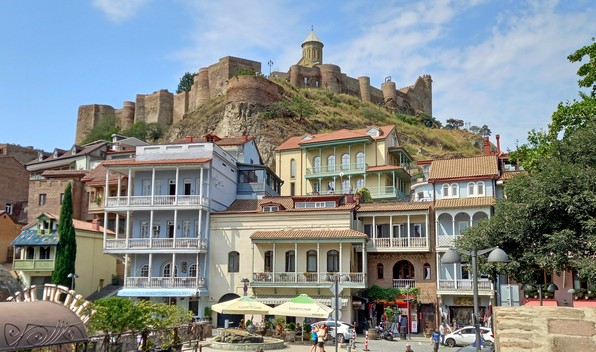
10. Tbilisi
As soon as I started walking through Georgia’s great capital city, Tbilisi, I loved it. It’s full of grand historic architecture, quirky contemporary buildings, beautiful leafy parks, distinctive neighborhoods and unique city vistas.
Tbilisi is built along the windy Mtkvari River and up the uneven hilly slopes on either side. Because of the hills and unique mix of historic and contemporary buildings scattered through a very leafy-green landscape, there are many quirky and unique city views to be found.
Tbilisi has grand boulevards lined by huge stately European and Soviet-era historic buildings. Several historic and modern bridges span the river. Ancient Byzantine and Kingdom of Georgia-era churches are perched on hilltops, cliffs and hidden in densely-foliaged gardens. Two huge glass tube-like structures lay in a new park beside the river, while a modern glass-n-steel bridge weaves over the water.
A massive stone fortress caps a tall promentory that hovers over the city. The steep hillsides immediately below are packed with rows of unique, Victorian-like homes, restaurants and hotels. At the base is a sea of brick domes that cover subterranean sulfuric thermal pools, where saunas and bathhouses are situated.
Around the bend of the hill is a dramatic canyon that ends at a plunging waterfall. Right in the middle of the city. On top of the promontory there’s a vast Botanical Garden Park.
There are vast museums, centuries-old parks with huge shady trees and pretty gardens. Restaurants offer international cuisines from all over the world. Giant urban city malls have Europen designer stores and jewelers.
==========================
You might also like:
10 Surprising Facts about Georgia
======================================






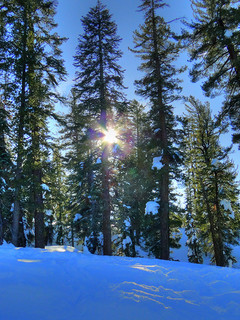

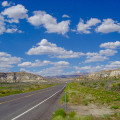
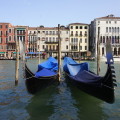

 Hi! I'm Lash, an American nomadic world traveler who's been traveling solo since 1998. I’m passionate about traveling the world nomadically and then sharing it all with you. I hope to inspire you to travel the world, to entertain you with tales from the road, and to help you reach your travel dreams. Welcome!
Hi! I'm Lash, an American nomadic world traveler who's been traveling solo since 1998. I’m passionate about traveling the world nomadically and then sharing it all with you. I hope to inspire you to travel the world, to entertain you with tales from the road, and to help you reach your travel dreams. Welcome! 



